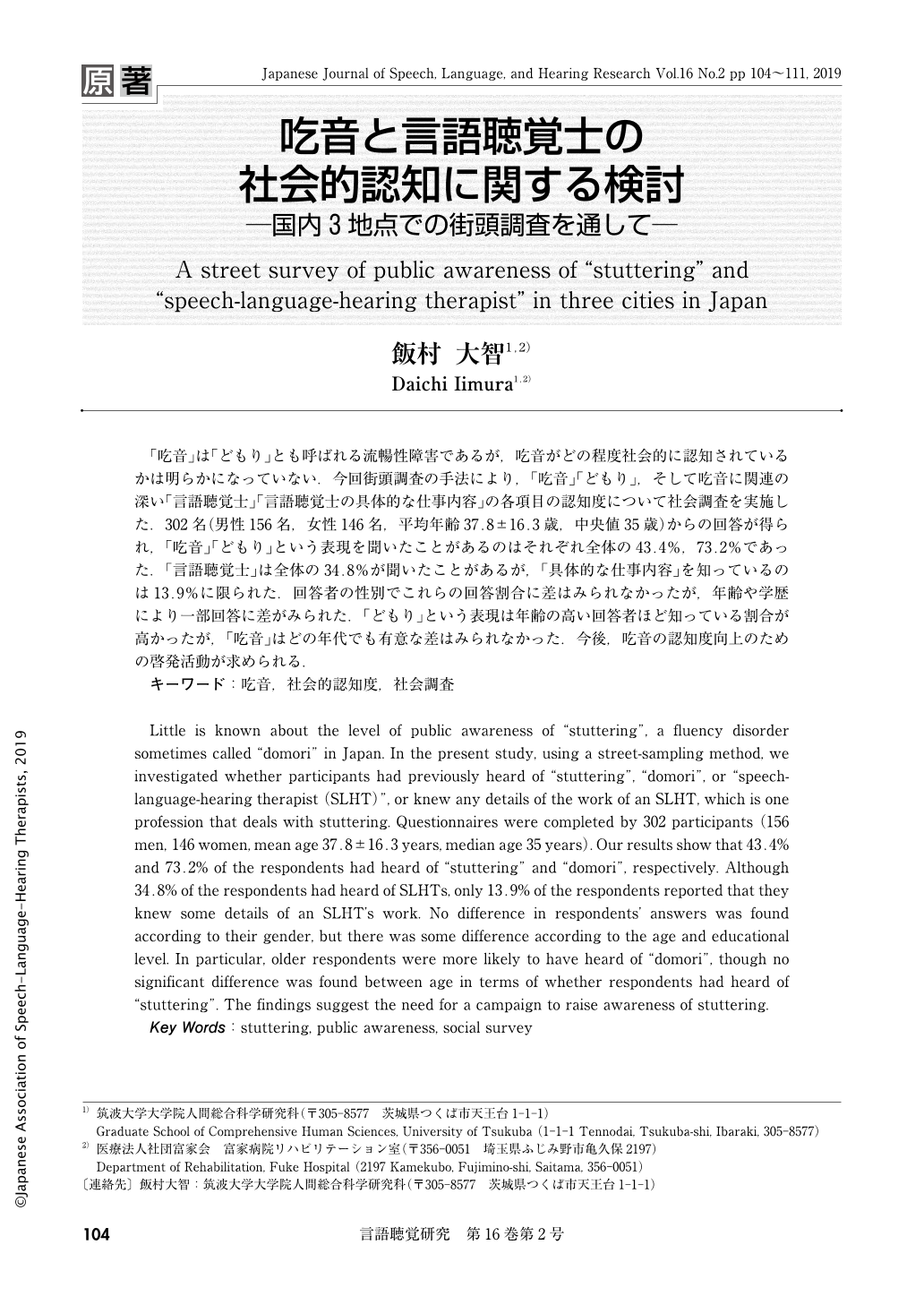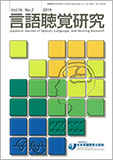Japanese
English
- 有料閲覧
- Abstract 文献概要
- 1ページ目 Look Inside
- 参考文献 Reference
「吃音」は「どもり」とも呼ばれる流暢性障害であるが,吃音がどの程度社会的に認知されているかは明らかになっていない.今回街頭調査の手法により,「吃音」「どもり」,そして吃音に関連の深い「言語聴覚士」「言語聴覚士の具体的な仕事内容」の各項目の認知度について社会調査を実施した.302名(男性156名,女性146名,平均年齢37.8±16.3歳,中央値35歳)からの回答が得られ,「吃音」「どもり」という表現を聞いたことがあるのはそれぞれ全体の43.4%,73.2%であった.「言語聴覚士」は全体の34.8%が聞いたことがあるが,「具体的な仕事内容」を知っているのは13.9%に限られた.回答者の性別でこれらの回答割合に差はみられなかったが,年齢や学歴により一部回答に差がみられた.「どもり」という表現は年齢の高い回答者ほど知っている割合が高かったが,「吃音」はどの年代でも有意な差はみられなかった.今後,吃音の認知度向上のための啓発活動が求められる.
Little is known about the level of public awareness of "stuttering", a fluency disorder sometimes called "domori" in Japan. In the present study, using a street-sampling method, we investigated whether participants had previously heard of "stuttering", "domori", or "speech-language-hearing therapist (SLHT)", or knew any details of the work of an SLHT, which is one profession that deals with stuttering. Questionnaires were completed by 302 participants (156 men, 146 women, mean age 37.8±16.3 years, median age 35 years). Our results show that 43.4% and 73.2% of the respondents had heard of "stuttering" and "domori", respectively. Although 34.8% of the respondents had heard of SLHTs, only 13.9% of the respondents reported that they knew some details of an SLHT's work. No difference in respondents' answers was found according to their gender, but there was some difference according to the age and educational level. In particular, older respondents were more likely to have heard of "domori", though no significant difference was found between age in terms of whether respondents had heard of "stuttering". The findings suggest the need for a campaign to raise awareness of stuttering.

Copyright © 2019, Japanese Association of Speech-Language-Hearing Therapists. All rights reserved.


